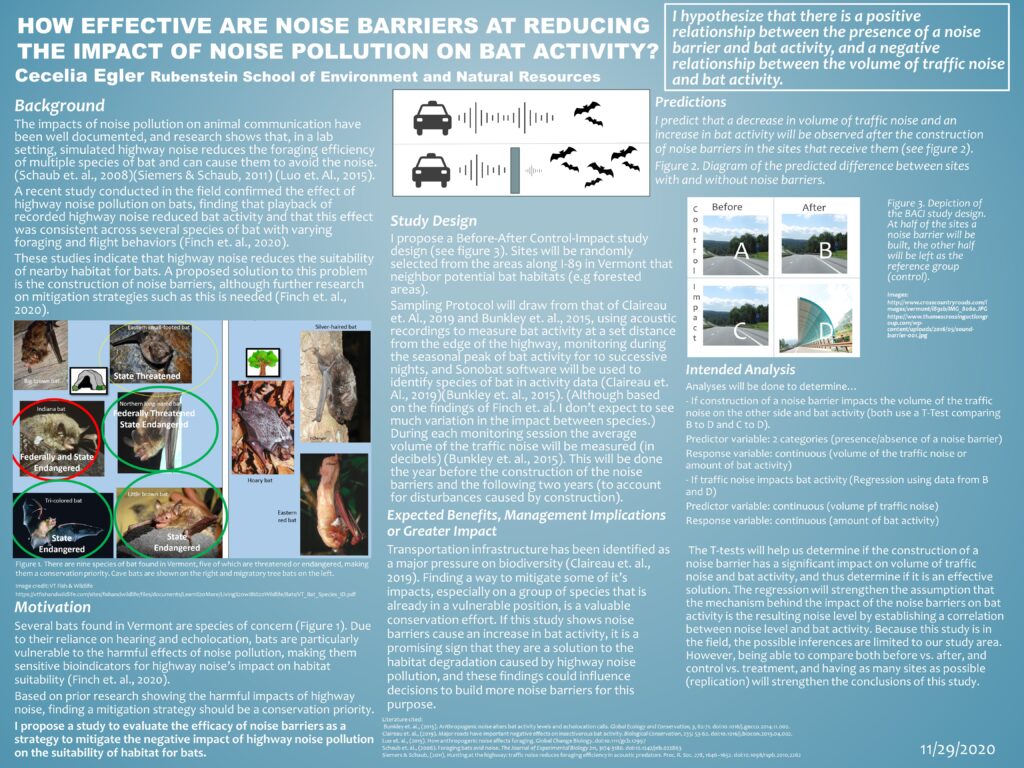This poster proposal was created by Cecelia Egler as part of our Fall 2020 NR 103 Signature Assignment. Click here to enlarge the poster!

This poster proposal was created by Cecelia Egler as part of our Fall 2020 NR 103 Signature Assignment. Click here to enlarge the poster!

This was such a thought-provoking look into how complex noise barrier effectiveness truly is for bats! It’s so enlightening to challenge the idea we often assume – that just reducing decibels automatically solves the problem – when bats might actually perceive entire “noisy landscapes” or even avoid the physical barrier itself, regardless of sound reduction numbers. That really recontextualizes things.
I’m curious, have wider analyses considered whether the general noise levels around the non-barrier-protected sides *and* the material composition, specifically the *sound absorptive* versus merely reflective qualities, might dramatically alter their efficacy for bats in the quieted zones right behind them? It seems like capturing and neutralizing lingering sound waves versus just bouncing them might make a subtle yet important difference in that specific altered acoustic environment.
And really picking up on the fascinating idea that the barrier itself is a disruptive physical object, have engineers or ecologists begun collaborating on innovative barrier designs that consciously try to mitigate this “wall effect” on actual bat navigation and commuting routes? It makes me wonder if there’s scope for barrier architecture
Really cool poster, Cecilia! I would recommend if possible to include two years of acoustic surveys before the construction and two years after. If only a single year, you might observe significantly more or less activity if the weather patterns are extreme that year. Having two years helps you account for that. I would be curious to see also how the acoustic barriers affect insect behavior and distribution patterns. If the acoustic barriers block the wind, for instance, you might have increased insect activity by the barriers that might inflate local bat activity. Really cool project regardless!